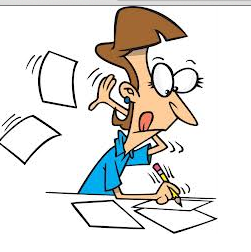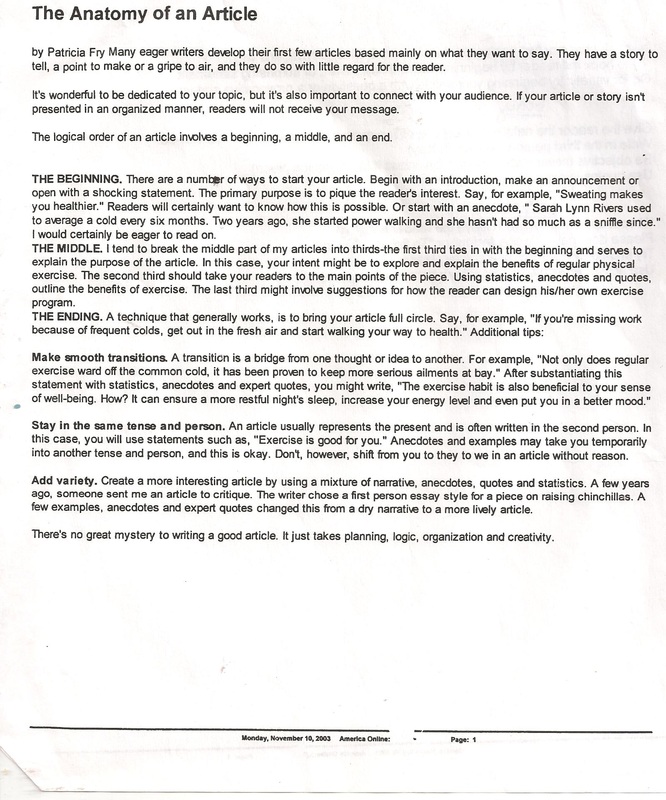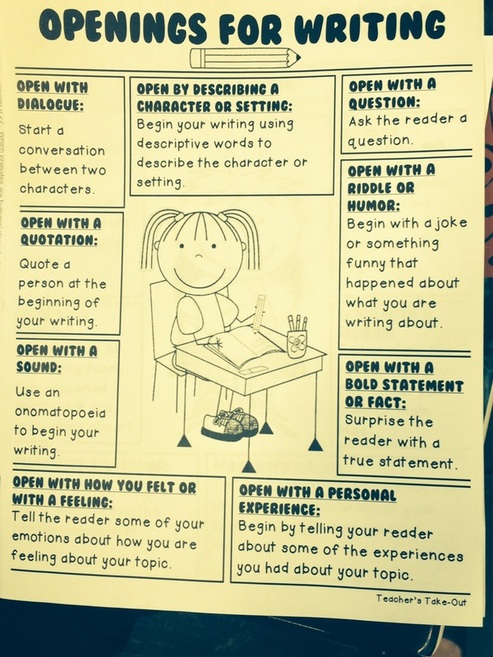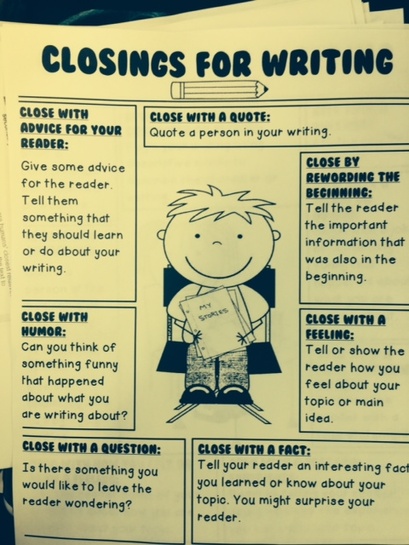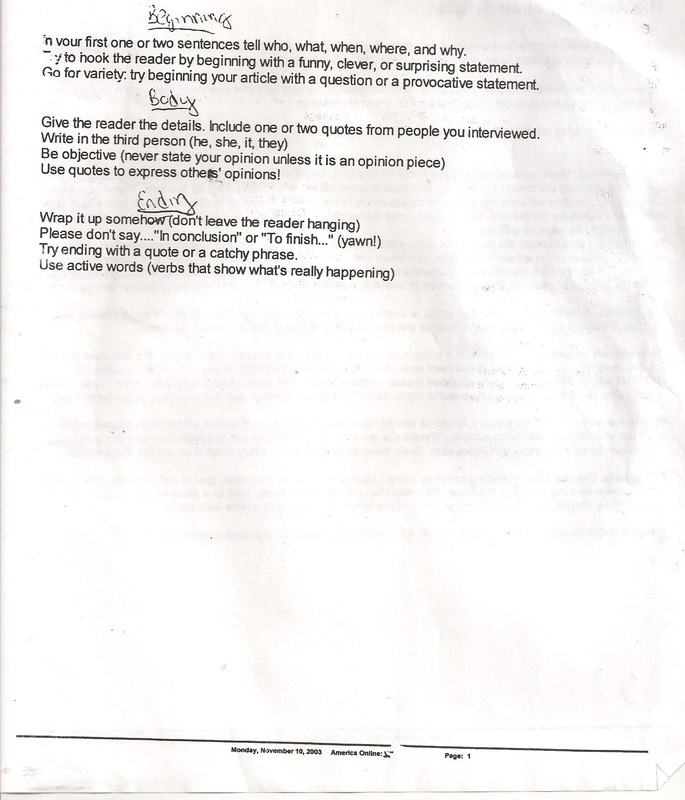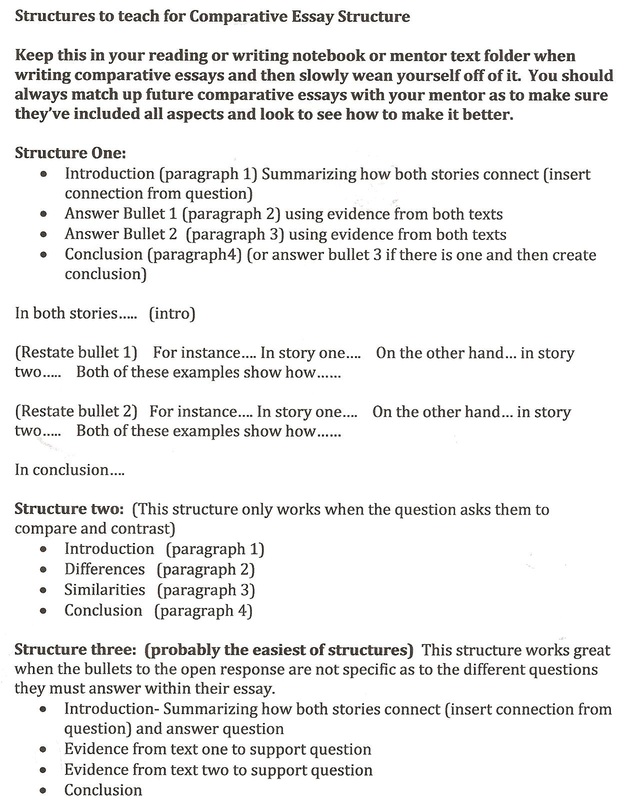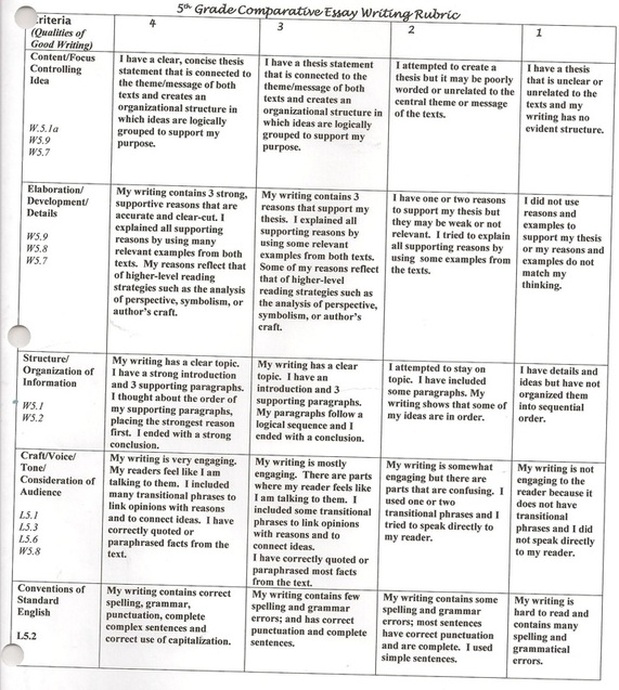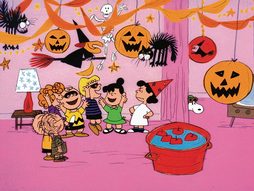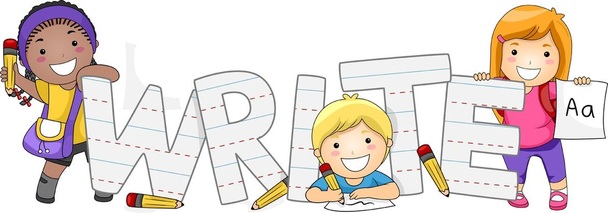ECOLOGICAL FEATURE ARTICLE REFLECTION AND RUBRIC:
| ecologicial_feature_article_rubric.docx | |
| File Size: | 14 kb |
| File Type: | docx |
| featurereflectionselfassessment.doc | |
| File Size: | 30 kb |
| File Type: | doc |
PLEASE REVIEW INFO ON LEADS, ENDINGS, ANECDOTES AND INCORPORATING RESEARCH INTO YOUR FEATURE ARTICLES. MAKE SURE YOU HAVE A NUT GRAF. HERE IS MORE STUFF TO HELP YOU--IT SHOULD BE A REVIEW: http://spawn.org/the-anatomy-of-an-article/
| features-informationalwritingstuff.docx | |
| File Size: | 173 kb |
| File Type: | docx |
| factsandresearchfeatures.docx | |
| File Size: | 343 kb |
| File Type: | docx |
FEATURE STUFF TO HELP YOU:
FEATURE ARTICLE POWERPOINT (WITH EXPLANATION OF A NUT GRAF):http://www.slideshare.net/methlal/feature-writing4832
Link to correct usage of dialogue-punctuation marks: http://www.be-a-better-writer.com/punctuate-dialogue.html
Link to correct usage of dialogue-punctuation marks: http://www.be-a-better-writer.com/punctuate-dialogue.html
ANATOMY OF A FEATURE ARTICLE:http://www.spawn.org/editing/anatomyofarticle.htm
ALSO: BEGINNING:
WRAP IT UP SOMEHOW (DON'T LEAVE THE READER HANGING)
- IN YOUR FIRST ONE OR TWO SENTENCES TELL WHO, WHAT, WHEN, WHERE AND WHY
- TRY TO HOOK YOUR READER BY BEGINNING WITH A FUNNY, CLEVER OR SURPRISING STATEMENT
- GO FOR VARIETY; TRY BEGINNING YOUR ARTICLE WITH A QUESTION OR A PROVOCATIVE STATEMENT
- GIVE THE READER DETAILS. INCLUDE AT LEAST ONE OR TWO QUOTES FROM PEOPLE YOU INTERVIEWED.
- WRITE IN THE THIRD PERSON (HE, SHE, IT, THEY)
- HOWEVER, KEEP IN MIND THAT YOU WANT TO USE SECOND PERSON NARRATIVE THROUGHOUT THE PIECE AS WELL TO KEEP THE READER ENGAGED (YOU WOULDN'T BELIEVE...)
- BE OBJECTIVE (DON'T COME RIGHT OUT AND STATE YOUR OPINION.--I THINK THIS OR THAT). HOWEVER, YOUR FEATURE IS ANGLED WITH FACTS AND QUOTES THAT DO INDEED SUPPORT HOW YOU FEEL AND HOW PASSIONATE YOU ARE ABOUT SOMETHING.
- USE QUOTES TO EXPRESS OTHERS OPINIONS
WRAP IT UP SOMEHOW (DON'T LEAVE THE READER HANGING)
- PLEASE DON'T SAY, IN CONCLUSION OR TO FINISH (YAWN)
- TRY ENDING WITH A QUOTE OR CATCHY PHRASE
- USE ACTIVE WORDS (VERBS THAT SHOW WHAT'S REALLY HAPPENING)
FEATURE ARTICLE RUBRIC:
| feature_article_rubric.doc | |
| File Size: | 32 kb |
| File Type: | doc |
CRACKING OPEN WORDS:
CRACKING OPEN WORDS:
: Writers want to crack open words in order to get to beautiful, hidden crystal. Words like fun, nice, pretty, wonderful and scary are generic, tired and overused words. They don’t say anything specific. They don’t paint a picture in the reader’s mind. We want to wake up these tired words. We can crack open sentences to change the tone. We can add concrete description in order to bring the writing alive. In each case, cracking open the known reveals the unknown. And, in most cases, it leads to something better, more exciting, more useful, more colorful, more surprising. Often in our manuscripts—especially early drafts—we may have non-descriptive words, phrases, and sentences that need to be cracked open and elaborated to really get to the good part. Consider these rather boring sentences:
· It was a pretty morning.
· He was a good boy.
These are all telling sentences and we know that good writing shows and does not tell. And even though they tell, they sure don't tell much. The reader is left with questions and uncertainty because of a lack of details. When we crack open words and phrases we're trying to get to theshow of the sentence. The process is easy. When you find a word, phrase, or sentence that tells, stop; envision the person, place, or thing; and give words to what you see in your mind. Then use the words that describe what you envision as you rewrite. Let me show you some examples and let you practice a couple of examples, too.
Word/Phrase/Sentence
What I Envision
Cracked Open Rewrite
It was a pretty morning.
· Sun/clouds
· Palms/sway
The palms swayed as the sun rose in the cloudy sky.
He was a good boy.
· Trevor
· A boy scout
· Trustworthy
Trevor was as good as a boy scout (and just as trusthworthy).
Teach: fun (adjective). Amusing, merry, enjoyable, lively, pleasant, diverting, festive, delightful
Fun (noun). Ball, blast, enjoyment, escapade, frolic, high jinks, merriment, recreation, romp, treat, merrymaking, horseplay, game, festivity, delight, entertainment
Thing: object, material, item, tool, utensil
Smile: beam, grin, laugh, smirk, glow
Walk: hike, stroll, step, stride, plod, stomp, glide, gallop, trudge, trample
Independent:
: Writers want to crack open words in order to get to beautiful, hidden crystal. Words like fun, nice, pretty, wonderful and scary are generic, tired and overused words. They don’t say anything specific. They don’t paint a picture in the reader’s mind. We want to wake up these tired words. We can crack open sentences to change the tone. We can add concrete description in order to bring the writing alive. In each case, cracking open the known reveals the unknown. And, in most cases, it leads to something better, more exciting, more useful, more colorful, more surprising. Often in our manuscripts—especially early drafts—we may have non-descriptive words, phrases, and sentences that need to be cracked open and elaborated to really get to the good part. Consider these rather boring sentences:
· It was a pretty morning.
· He was a good boy.
These are all telling sentences and we know that good writing shows and does not tell. And even though they tell, they sure don't tell much. The reader is left with questions and uncertainty because of a lack of details. When we crack open words and phrases we're trying to get to theshow of the sentence. The process is easy. When you find a word, phrase, or sentence that tells, stop; envision the person, place, or thing; and give words to what you see in your mind. Then use the words that describe what you envision as you rewrite. Let me show you some examples and let you practice a couple of examples, too.
Word/Phrase/Sentence
What I Envision
Cracked Open Rewrite
It was a pretty morning.
· Sun/clouds
· Palms/sway
The palms swayed as the sun rose in the cloudy sky.
He was a good boy.
· Trevor
· A boy scout
· Trustworthy
Trevor was as good as a boy scout (and just as trusthworthy).
Teach: fun (adjective). Amusing, merry, enjoyable, lively, pleasant, diverting, festive, delightful
Fun (noun). Ball, blast, enjoyment, escapade, frolic, high jinks, merriment, recreation, romp, treat, merrymaking, horseplay, game, festivity, delight, entertainment
Thing: object, material, item, tool, utensil
Smile: beam, grin, laugh, smirk, glow
Walk: hike, stroll, step, stride, plod, stomp, glide, gallop, trudge, trample
Independent:
- Crack open at least one sentence. Use a post it to create interesting one.
- Begin your own personal thesaurus (word treasury) by finding at least two tired over used phrases/words and begin listing alternative words/phrases. (You may use a thesaurus).
- Try re-visiting your own pieces and cracking open sentences and words that are overused and fixing them.
- Begin collecting your own word treasury and keeping in your notebooks:
- Words you love the sound of
- Don’t know the meaning of but would like to find out
- Words you have seen in books that look interesting
- Words that give a strong image
- Words that evoke a memory
- Words you love to say out loud
- Words that have special meaning
FEATURE ARTICLE POWERPOINT (INCLUDING EXPLANATION ABOUT A NUT GRAPH): http://www.slideshare.net/methlal/feature-writing4832
COMPARATIVE ESSAY TASK: DUE BY THE END OF THE DAY ON FRIDAY, DECEMBER 12TH:
| comparativeessaytask.docx | |
| File Size: | 132 kb |
| File Type: | docx |
Your browser does not support viewing this document. Click here to download the document.
RULES ABOUT PARAGRAPHING:
A PLETHORA OF REVISION STRATEGIES:
RULES FOR PARAGRAPHING:
PLEASE FOLLOW THESE AS YOU REVISE YOUR MEMOIRS-When to use paragraphs in narrative writing:
• New characters come along
• New event happens; new idea is introduced
• New setting
• New person is speaking (new paragraph is needed everytime someone speaks and you use dialogue)
• Movement in time (forward or backward)
• Movement in place
RULES FOR PARAGRAPHING:
PLEASE FOLLOW THESE AS YOU REVISE YOUR MEMOIRS-When to use paragraphs in narrative writing:
• New characters come along
• New event happens; new idea is introduced
• New setting
• New person is speaking (new paragraph is needed everytime someone speaks and you use dialogue)
• Movement in time (forward or backward)
• Movement in place
MORE ABOUT LEADS AND ENDINGS:
ALL INFORMATIONAL WRITING-FEATURE ARTICLES SHOULD CONTAIN:
Clear angle/big idea/thesis
· LINK TO GREAT MENTOR TEXT: http://articles.chicagotribune.com/1995-08-01/features/9508010020_1_rattlers-rattlesnakes-swallow
Good, engaging lead
· Big bang ending
· Interesting, non empty quotes that support angles
· Enough details/elaborations on angle
· Smooth transitions/bridges
· Evidence of research
· Evidence of observation
· Sub headings
· Catchy title and subheading that reveals “heart and soul” of the piece
· Good, logical order/organization
· At least two photos with captions
· Sidebars
MORE GREAT STUFF ABOUT LEADS AND ENDINGS:
LEADS
The lead or an intro is the beginning paragraph for a story that sets the tone and introduces the reader to the rest of the story. The lead should be accurate, short and crisp and should reflect the mood of the story. For news reporting and writing, the lead sentence usually contains one idea and follows the subject-verb-object sentence structure for clarity, and it should not exceed 35 words.
Functions of the Lead:
1. Grabs the reader’s attention;
2. Tells something about the subject of the story;
3. Shows the significance of the story;
4. Shows what kind of story it is (news, feature, profile, research, etc.); and
5. Establishes pace and tone.
There are many different ways to begin a feature. Think of your writing as a river that goes up a big waterfall. Often when we write, we start too far upstream of important information. You can sharpen your lead by starting it closer to the waterfall by revealing the most important information. Many effective leads include the following:
• Anecdote: a brief story that reveals the essence and the heart of your subject.
• Quotation: a quote lead can give additional authority and a fresh voice to the story.
• Question: involves the reader in the basic issue/focus of the story.
• Historical lead: places story in a historical context.
• Reader identification: shows reader how story relates to them.
• Problem: sets up problem that will be solved
• Narrative: Brings face to the story and gives the reader a person with whom to identify with during the reading of the story. It establishes the story as the form of the article.
ENDINGS
Functions of an ending:
1. Tell the reader the story is over;
2. Nail the central theme of the story to the reader’s mind; and
3. Resonate – stick with the reader and make them think.
WRAP IT UP SOMEHOW (DON'T LEAVE THE READER HANGING)
• PLEASE DON'T SAY, IN CONCLUSION OR TO FINISH (YAWN)
• TRY ENDING WITH A QUOTE OR CATCHY PHRASE
• USE ACTIVE WORDS (VERBS THAT SHOW WHAT'S REALLY HAPPENING)
types of Endings
1. Opinion/strong statement/judgement
2. Conclusion/Wrap-up
3. Recommendation/Call to action
4. Quotation – from a well-known or not a famous person
5. Restate the beginning/circle ending/lead replay – going back to the lead, revisiting the issue and reviewing what the readers learned
6. Question that involves the reader/Unending
7. Personal comment – personal conclusion or a lesson learned by the writer through his experience in writing the article
8. Open conclusion/unending – lets the readers draw their own conclusion
9. Anecdotal ending – in profiles, this ending can be a short but significant story that shows the person’s character; can be something significant a person said
10. Detail ending – uses a specific, concrete detail, fact, or statistic to conclude the story
11. Face ending – focuses on the unique point of view of a person central to the story-similar to the detail ending, but with a personal touch
12. Scenic ending – describes a physical setting, letting the reader “see” the story-almost the way the camera pulls back at the end of a movie
Clear angle/big idea/thesis
· LINK TO GREAT MENTOR TEXT: http://articles.chicagotribune.com/1995-08-01/features/9508010020_1_rattlers-rattlesnakes-swallow
Good, engaging lead
· Big bang ending
· Interesting, non empty quotes that support angles
· Enough details/elaborations on angle
· Smooth transitions/bridges
· Evidence of research
· Evidence of observation
· Sub headings
· Catchy title and subheading that reveals “heart and soul” of the piece
· Good, logical order/organization
· At least two photos with captions
· Sidebars
MORE GREAT STUFF ABOUT LEADS AND ENDINGS:
LEADS
The lead or an intro is the beginning paragraph for a story that sets the tone and introduces the reader to the rest of the story. The lead should be accurate, short and crisp and should reflect the mood of the story. For news reporting and writing, the lead sentence usually contains one idea and follows the subject-verb-object sentence structure for clarity, and it should not exceed 35 words.
Functions of the Lead:
1. Grabs the reader’s attention;
2. Tells something about the subject of the story;
3. Shows the significance of the story;
4. Shows what kind of story it is (news, feature, profile, research, etc.); and
5. Establishes pace and tone.
There are many different ways to begin a feature. Think of your writing as a river that goes up a big waterfall. Often when we write, we start too far upstream of important information. You can sharpen your lead by starting it closer to the waterfall by revealing the most important information. Many effective leads include the following:
• Anecdote: a brief story that reveals the essence and the heart of your subject.
• Quotation: a quote lead can give additional authority and a fresh voice to the story.
• Question: involves the reader in the basic issue/focus of the story.
• Historical lead: places story in a historical context.
• Reader identification: shows reader how story relates to them.
• Problem: sets up problem that will be solved
• Narrative: Brings face to the story and gives the reader a person with whom to identify with during the reading of the story. It establishes the story as the form of the article.
ENDINGS
Functions of an ending:
1. Tell the reader the story is over;
2. Nail the central theme of the story to the reader’s mind; and
3. Resonate – stick with the reader and make them think.
WRAP IT UP SOMEHOW (DON'T LEAVE THE READER HANGING)
• PLEASE DON'T SAY, IN CONCLUSION OR TO FINISH (YAWN)
• TRY ENDING WITH A QUOTE OR CATCHY PHRASE
• USE ACTIVE WORDS (VERBS THAT SHOW WHAT'S REALLY HAPPENING)
types of Endings
1. Opinion/strong statement/judgement
2. Conclusion/Wrap-up
3. Recommendation/Call to action
4. Quotation – from a well-known or not a famous person
5. Restate the beginning/circle ending/lead replay – going back to the lead, revisiting the issue and reviewing what the readers learned
6. Question that involves the reader/Unending
7. Personal comment – personal conclusion or a lesson learned by the writer through his experience in writing the article
8. Open conclusion/unending – lets the readers draw their own conclusion
9. Anecdotal ending – in profiles, this ending can be a short but significant story that shows the person’s character; can be something significant a person said
10. Detail ending – uses a specific, concrete detail, fact, or statistic to conclude the story
11. Face ending – focuses on the unique point of view of a person central to the story-similar to the detail ending, but with a personal touch
12. Scenic ending – describes a physical setting, letting the reader “see” the story-almost the way the camera pulls back at the end of a movie
LEADS AND ENDINGS:
COMPARATIVE ESSAY TASK-DUE MONDAY, DECEMBER 15:
How can we synthesize information from different sources to write a comparative essay? You can write a comparative essay of any two of the following texts:
Review comparative essay format with transitional phrases: Intro discusses important theme-message. Second paragraph, talk about how theme applies in first text. Paraphrase examples. Third paragraph: discuss how theme-big ideas apply—paraphrase information. Fourth paragraph: Conclusion: Show insight. Draw conclusions. Based on these two texts, we can infer that…re-state main idea. DUE MONDAY.
- Rachel Carson
- Rain Forests
- Night of the Spadefoot Toads
- Any (or more than one) of the Carl Hiassen books
- Short story: the Tree of Heaven
- We will take new info learned and show that we can synthesize by writing a comparative essay. Begin by completing this prompt: In Rachel Carson, an important theme is….I know this because the text teaches us that (paraphrase info). In Rain Forests, a similar theme is….I know this because the text teaches us that (paraphrase info). Both these texts teach us that (state theme-big idea). Therefore, I can conclude (infer) that….(state new knowledge that shows insight based on your new learning).
Review comparative essay format with transitional phrases: Intro discusses important theme-message. Second paragraph, talk about how theme applies in first text. Paraphrase examples. Third paragraph: discuss how theme-big ideas apply—paraphrase information. Fourth paragraph: Conclusion: Show insight. Draw conclusions. Based on these two texts, we can infer that…re-state main idea. DUE MONDAY.
COMPARATIVE ESSAY:
| comparativeessay.doc | |
| File Size: | 43 kb |
| File Type: | doc |
Steps
1. Analyze the question carefully.
Do your research and make sure you have a complete understanding of both things
being compared. You will benefit from the research when you come to write your
essay and can easily compare similar aspects.
2. Write the introduction
Start with a general point which establishes the similarity between the two subjects
then move to the specific (exact) focus of the essay. The reader must understand which
points you will be examining and which points you will not be examining within the
comparison. At the end of the introduction, declare your preference or describe the
significance of the two subjects.
3. Organize the sequence of paragraphs in the main body of your essay.
Once you have defined the comparison and the basis of the argument you must
determine the structure of your essay.
1. Analyze the question carefully.
Do your research and make sure you have a complete understanding of both things
being compared. You will benefit from the research when you come to write your
essay and can easily compare similar aspects.
2. Write the introduction
Start with a general point which establishes the similarity between the two subjects
then move to the specific (exact) focus of the essay. The reader must understand which
points you will be examining and which points you will not be examining within the
comparison. At the end of the introduction, declare your preference or describe the
significance of the two subjects.
3. Organize the sequence of paragraphs in the main body of your essay.
Once you have defined the comparison and the basis of the argument you must
determine the structure of your essay.
SCAMPERING WITH ALADDIN:

TASK: CHOOSE A PARTNER (OR TWO OTHER PARTNERS) TO WRITE A NEW VERSION OF ALADDIN OR ANOTHER FAMOUS FAIRYTALE. FIRST COMPLETE THE SCAMPER OUTLINE—DECIDING HOW YOU WILL CHANGE EACH ELEMENT. THEN WRITE YOUR OWN NARRATIVE THAT INCORPORATES STORY ELEMENTS: (INTRODUCTION, IMPORTANT EVENTS, TURNING POINT-CLIMAX, RESOLUTION AND ENDING). MAKE SURE YOUR FAIRYTALE IS TEACHING YOUR READER IMPORTANT LIFE LESSONS AND THEY ARE CLEARLY EVIDENT THROUGH THE CHARACTERS’ ACTIONS AND INTERACTIONS WITH EACH OTHER. BE SURE TO HAVE A BALANCE OF NARRATIVE, DIALOGUE AND INTEGRATE FIGURATIVE LANGUAGE AND LOTS OF PICTURES.
WEBSITES TO HELP (IN ADDITION TO CLASSROOM RESOURCES):
http://www.worldoftales.com/fairy_tales.html
http://video.nhptv.org/program/folk-tales-fairy-tales-fables
http://www.cs.cmu.edu/~spok/grimmtmp/
http://www.kidsgen.com/fables_and_fairytales/
http://www.grimmfairytales.com/en/main
http://www.childrenstory.com/tales/
http://video.nhptv.org/program/folk-tales-fairy-tales-fables
http://www.cs.cmu.edu/~spok/grimmtmp/
http://www.kidsgen.com/fables_and_fairytales/
http://www.grimmfairytales.com/en/main
http://www.childrenstory.com/tales/
HOW TO SCAMPER:
| scamperbackground.docx | |
| File Size: | 23 kb |
| File Type: | docx |
| scamperstrategy.pdf | |
| File Size: | 208 kb |
| File Type: | |
SCAMPER POWERPOINT WITH GOLDILOCKS SAMPLE:
| scamper.ppt | |
| File Size: | 10560 kb |
| File Type: | ppt |
Your browser does not support viewing this document. Click here to download the document.
Your browser does not support viewing this document. Click here to download the document.
|
Your browser does not support viewing this document. Click here to download the document.
|
RUBRIC: |
INFORMATIVE TASK AND RUBRIC:
Your browser does not support viewing this document. Click here to download the document.
Your browser does not support viewing this document. Click here to download the document.
MAN IN THE MIRROR: DUE THURSDAY, NOVEMBER 6

WRITE A NARRATIVE RESPONSE TO MAN IN THE MIRROR. TRY TO LOOK AT IT THROUGH THE LENS OF BOTH A READER AND WRITER. TRY TO INCLUDE THE FOLLOWING:
· What is the extended metaphor? What personification, simile and other figurative language is used? Provide textual evidence.(CRAFT)
· What is the main idea-message-theme? How do you know? (Reader’s lens)
· What is the author’s purpose? How do you know?
· What is the tone-mood? How do you know?
· Make text to text connections and text to world connections?
· How has the poem-song impacted you? What is your plan and how will you carry it out?
· What is the extended metaphor? What personification, simile and other figurative language is used? Provide textual evidence.(CRAFT)
· What is the main idea-message-theme? How do you know? (Reader’s lens)
· What is the author’s purpose? How do you know?
· What is the tone-mood? How do you know?
· Make text to text connections and text to world connections?
· How has the poem-song impacted you? What is your plan and how will you carry it out?
Your browser does not support viewing this document. Click here to download the document.
THE GREAT PUMPKIN DEBATE: RESPONSE IS DUE MONDAY, NOVEMBER 5
Your browser does not support viewing this document. Click here to download the document.
Your browser does not support viewing this document. Click here to download the document.
LEADS AND ENDINGS:
Your browser does not support viewing this document. Click here to download the document.
MORE:
MAKING A DIFFERENCE TASK AND RUBRIC:
Your browser does not support viewing this document. Click here to download the document.
Your browser does not support viewing this document. Click here to download the document.
EXTENDED METAPHOR SONG ANALYSIS-DUE WEDNESDAY, NOVEMBER 5:
Your browser does not support viewing this document. Click here to download the document.
EXTENDED METAPHOR TASK: FINISH DRAFT BY FRIDAY, OCTOBER 24. PUBLISH BY MONDAY, OCTOBER 27
TASK: USING I AM A ROCK & IDENTITY AS YOUR MENTOR TEXTS, CREATE YOUR OWN EXTENDED METAPHOR. IT SHOULD BE AT LEAST THREE STANZAS LONG AND INCORPORATE LOTS OF IMAGERY, RICH DETAILS & OF COURSE, FIGURATIVE LANGUAGE. KEEP IN MIND YOUR TONE (INTENT) AND MOOD (THE ATMOSPHERE YOU WISH TO CREATE FOR YOUR READERS). IT SHOULD EVOKE EMOTIONS. USE THE RUBRIC TO GUIDE YOUR WORK. INCLUDE IMAGES. YOU MAY ALSO PUBLISH IN TWO COLUMNS, IF NECESSARY.http://breadloafpoetryexchange.pbworks.com/w/page/39725748/Identity%20by%20Julio%20Noboa%20Polanco
I am a Rock: http://www.azlyrics.com/lyrics/simongarfunkel/iamarock.html
I am a Rock: http://www.azlyrics.com/lyrics/simongarfunkel/iamarock.html
Your browser does not support viewing this document. Click here to download the document.
FIGURATIVE LANGUAGE POWERPOINT:
| figurative-language_power_point_1.ppt | |
| File Size: | 2248 kb |
| File Type: | ppt |
TRANSITIONAL WORDS & PHRASES
Transition Words and Phrases
Sequence:
again, also, and, and then, besides, finally, first...second...third, furthermore, last, moreover, next, still, too, the next step, this takes us to
Time:
after a bit, after a few days, after a while, afterward, as long as, as soon as, at last, at length, at that time, before, earlier, immediately, in the meantime, in the past, lately, later, meanwhile, now, presently, shortly, simultaneously, since, so far, soon, then, thereafter, until, when, in a little while, afterward, by this time
Comparison:
again, also, in the same way, likewise, once more, similarly, by the way
Contrast:
although, but, despite, even though, however, in contrast, in spite of, instead, nevertheless, nonetheless, notwithstanding, on the contrary, on the one hand...on the other hand, regardless, still, though, yet
Examples:
after all, even, for example, for instance, indeed, in fact, of course, specifically, such as, the following example, to illustrate, to illustrate this point
Cause and Effect:
accordingly, as a result, because, consequently, for this purpose, hence, so, then, therefore, thereupon, thus, to this end, as you can imagine
Place:
above, adjacent to, below, beyond, closer to, elsewhere, far, farther on, here, near, nearby, opposite to, there, to the left, to the right
Concession:
although it is true that, granted that, I admit that, it may appear that, naturally, of course, as a result
Summary, Repetition, or Conclusion:
as a result, as has been noted, as I have said, as we have seen, as mentioned earlier, in any event, in conclusion, in other words, in short, on the whole, therefore, to summarize, all in all, consequently, from now on, in closing, simply stated, to sum up my thoughts, when all is said and done
DIALOGUE:
| punctuating-dialogue1.ppt | |
| File Size: | 333 kb |
| File Type: | ppt |
RULES AND REGULATIONS OF WRITING WORKSHOP:
1. Save everything; it’s all a part of the history of the piece of writing, and you never you know when you might want to use it.
2. Date and label everything you write to help you keep track of what you’ve done (e.g., notes, draft #1, brainstorming).
3. When a piece of writing is finished, clip everything together, including the drafts, notes, lists, editing checklist, and peer conferencing form, and file it in your permanent writing folder.
4. Record every piece of writing you finish on the form in your permanent writing folder.
5. Write on one sides of the paper only and always skip lines or type double-spaced. Both will make revision, polishing, and editing easier and more productive for you.
6. Draft your prose writing in sentences and paragraphs. Draft your poems in lines and stanzas. Don’t go back into a mess of text and try to create order. Format as you go. Refer to your proofreading list.
7. Gets into the habit of punctuating and spelling as conventionally as you can while you’re composing; this is what writers do.
8. Get into the habit of beginning each workshop by reading what you’ve already written. Establish where you are in the piece and pick up the momentum.
9. Understand that writing is thinking. Do nothing to distract other writers or me. Don’t put your words into our brains as we’re struggling to find our own.
10. When you confer with me or with partners, use a soft voice as I use when I talk to you: whisper.
11. When you need to confer with peers, use a conference area and record responses on a peer conference form so the writer has a reminder of what happened.
12. Write as well and as much as you can!
2. Date and label everything you write to help you keep track of what you’ve done (e.g., notes, draft #1, brainstorming).
3. When a piece of writing is finished, clip everything together, including the drafts, notes, lists, editing checklist, and peer conferencing form, and file it in your permanent writing folder.
4. Record every piece of writing you finish on the form in your permanent writing folder.
5. Write on one sides of the paper only and always skip lines or type double-spaced. Both will make revision, polishing, and editing easier and more productive for you.
6. Draft your prose writing in sentences and paragraphs. Draft your poems in lines and stanzas. Don’t go back into a mess of text and try to create order. Format as you go. Refer to your proofreading list.
7. Gets into the habit of punctuating and spelling as conventionally as you can while you’re composing; this is what writers do.
8. Get into the habit of beginning each workshop by reading what you’ve already written. Establish where you are in the piece and pick up the momentum.
9. Understand that writing is thinking. Do nothing to distract other writers or me. Don’t put your words into our brains as we’re struggling to find our own.
10. When you confer with me or with partners, use a soft voice as I use when I talk to you: whisper.
11. When you need to confer with peers, use a conference area and record responses on a peer conference form so the writer has a reminder of what happened.
12. Write as well and as much as you can!
WHAT IS A WRITER'S NOTEBOOK?
| |||||||
